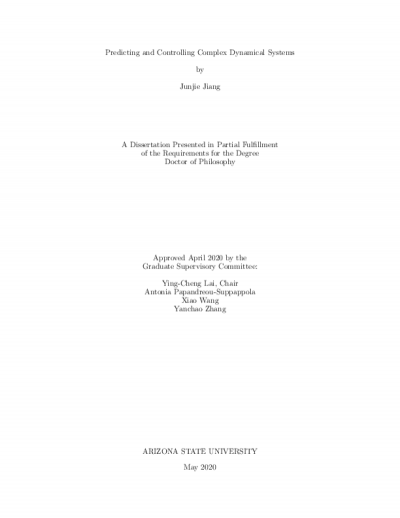Predicting and Controlling Complex Dynamical Systems

My research mainly concentrates on predicting and controlling tipping points (saddle-node bifurcation) in complex ecological systems, comparing linear and nonlinear control methods in complex dynamical systems. Moreover, I use advanced artificial neural networks to predict chaotic spatiotemporal dynamical systems. Complex networked systems can exhibit a tipping point (a “point of no return”) at which a total collapse occurs. Using complex mutualistic networks in ecology as a prototype class of systems, I carry out a dimension reduction process to arrive at an effective two-dimensional (2D) system with the two dynamical variables corresponding to the average pollinator and plant abundances, respectively. I demonstrate that, using 59 empirical mutualistic networks extracted from real data, our 2D model can accurately predict the occurrence of a tipping point even in the presence of stochastic disturbances. I also develop an ecologically feasible strategy to manage/control the tipping point by maintaining the abundance of a particular pollinator species at a constant level, which essentially removes the hysteresis associated with tipping points.
Besides, I also find that the nodal importance ranking for nonlinear and linear control exhibits opposite trends: for the former, large degree nodes are more important but for the latter, the importance scale is tilted towards the small-degree nodes, suggesting strongly irrelevance of linear controllability to these systems. Focusing on a class of recurrent neural networks - reservoir computing systems that have recently been exploited for model-free prediction of nonlinear dynamical systems, I uncover a surprising phenomenon: the emergence of an interval in the spectral radius of the neural network in which the prediction error is minimized.
- Author (aut): Jiang, Junjie
- Thesis advisor (ths): Lai, Ying-Cheng
- Committee member: Papandreou-Suppappola, Antonia
- Committee member: Wang, Xiao
- Committee member: Zhang, Yanchao
- Publisher (pbl): Arizona State University

